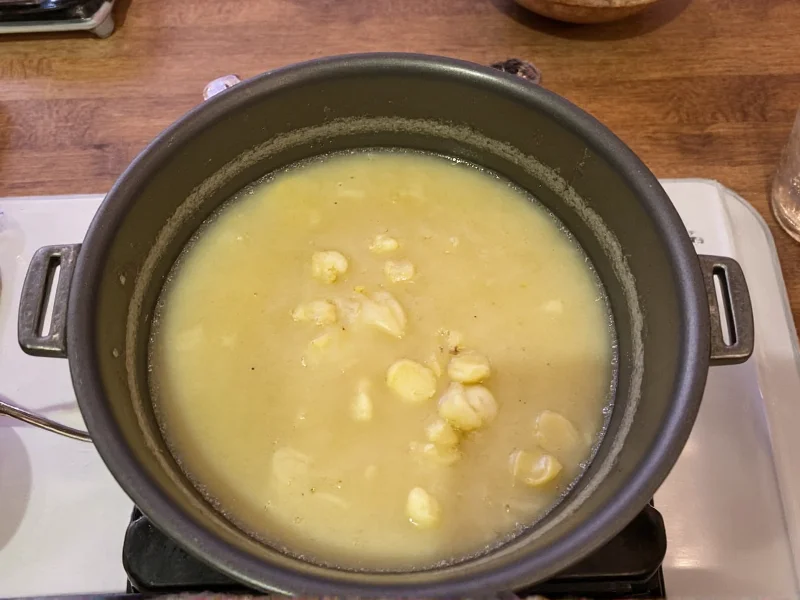Miso soup represents one of Japan's most cherished culinary traditions, served daily in households across the country. This seemingly simple broth carries profound cultural significance as the essential starter to any Japanese meal. Beyond its comforting warmth, homemade miso soup delivers live probiotics that support gut health—something instant versions can't replicate. Understanding the proper technique transforms this humble dish from a basic side into a nourishing culinary experience.
Understanding Miso Paste Varieties
Selecting the right miso paste forms the foundation of exceptional soup. These fermented soybean pastes vary dramatically in flavor profile based on ingredients, fermentation time, and regional production methods. Many beginners struggle with miso soup because they use inappropriate paste types for their desired outcome.
| Miso Type | Color | Fermentation | Flavor Profile | Best For |
|---|---|---|---|---|
| Shiro Miso | White/Yellow | 3-6 months | Mild, sweet, delicate | Beginners, summer soups |
| Aka Miso | Red/Brown | 1-3 years | Strong, salty, robust | Winter dishes, hearty recipes |
| Mugi Miso | Tan | 1-2 years | Earthy, complex | Vegetable-based soups |
Essential Ingredients Breakdown
Authentic miso soup requires just five components, but each plays a critical role. Many Western recipes substitute ingredients that fundamentally alter the dish's character. For traditional results, source these specific elements:
- Dashi stock – The flavor foundation (never use plain water). Traditional dashi combines dried kombu seaweed and bonito flakes, though vegetarian versions use only kombu.
- Miso paste – Choose unpasteurized for live probiotics. White miso (shiro miso) offers the most approachable flavor for beginners learning how to make miso soup from scratch.
- Silken tofu – Must be soft variety cut into 1/2-inch cubes. Firm tofu won't provide the proper delicate texture.
- Wakame seaweed – Dried form rehydrates in broth. Don't substitute other seaweeds—wakame has unique texture and mild flavor.
- Green onions – Thinly sliced on diagonal for visual appeal and balanced onion flavor.
Step-by-Step Preparation Guide
Follow this traditional method for perfect miso soup every time. The proper technique for dissolving miso paste separates authentic preparation from common mistakes that ruin flavor.
- Prepare dashi – Soak 4x6 inch kombu piece in 4 cups cold water for 30 minutes. Heat to 160°F (just below simmering), remove kombu, and add 1/2 cup dried bonito flakes. Steep 1 minute, then strain.
- Rehydrate wakame – Place 1 tablespoon dried wakame in a small bowl with dashi broth. Let sit 5 minutes until expanded.
- Heat broth – Warm dashi to 150°F—never boil. Excessive heat destroys miso's beneficial enzymes and creates bitter flavors.
- Dissolve miso – Ladle 1 cup warm broth into separate bowl. Whisk in 3-4 tablespoons miso paste until completely smooth with no lumps.
- Combine – Return miso mixture to main pot. Add rehydrated wakame and 8 oz cubed silken tofu. Heat gently to 140°F—do not simmer.
- Finish – Remove from heat. Stir in sliced green onions. Let rest 2 minutes before serving.
Avoiding Common Miso Soup Mistakes
Even experienced cooks make critical errors when preparing traditional miso soup. These issues frequently appear in online recipes for quick miso soup, compromising both flavor and nutritional value:
- Boiling the miso – This destroys probiotics and creates unpleasant bitterness. Always maintain broth below 160°F when adding miso paste.
- Using tap water – Chlorine kills beneficial bacteria in miso. Filtered or spring water yields superior results for healthy miso soup preparation.
- Incorrect miso ratio – Too little creates weak flavor; too much overwhelms. Start with 1 tablespoon per cup of broth, adjusting to taste.
- Adding miso directly – Always dissolve in small amount of warm broth first to prevent lumps and ensure even distribution.
- Overcooking additions – Tofu and wakame need only gentle warming—prolonged cooking makes tofu rubbery and wakame slimy.
Customizing Your Miso Soup
Once you've mastered the basic technique for making authentic miso soup, explore these regional variations and dietary adaptations. The proper foundation allows endless creativity while maintaining traditional integrity.
Seasonal variations: Summer versions incorporate fresh vegetables like daikon or spinach, while winter recipes feature heartier ingredients like mushrooms or root vegetables. Always add delicate ingredients at the end to preserve texture.
Dietary adaptations: For vegan miso soup, replace bonito flakes with additional kombu or dried shiitake mushrooms. Gluten-free preparation requires checking miso labels—some contain barley. The best miso paste for dietary restrictions will specify these details on packaging.
Protein enhancements: While traditional miso soup remains vegetarian, many home cooks add cooked chicken, shrimp, or clams. Introduce proteins after dissolving the miso to maintain optimal temperature control.
Serving and Storage Guidelines
Miso soup achieves peak flavor when served immediately after preparation. The live cultures begin diminishing as temperature drops, so avoid making large batches intended for multiple servings. For optimal probiotic benefits, consume within 20 minutes of preparation.
When storing leftovers, keep miso and broth separate. Refrigerate dashi stock and miso paste in separate containers for up to 3 days. Reheat dashi gently, then whisk in miso off-heat. This approach preserves more probiotics than reheating fully prepared soup.
Traditional Japanese etiquette serves miso soup in lacquered bowls with the opening facing left. Pair with rice and pickled vegetables for an authentic meal structure. The soup should be warm but not scalding—ideally around 140°F to preserve both flavor and nutritional benefits.











 浙公网安备
33010002000092号
浙公网安备
33010002000092号 浙B2-20120091-4
浙B2-20120091-4